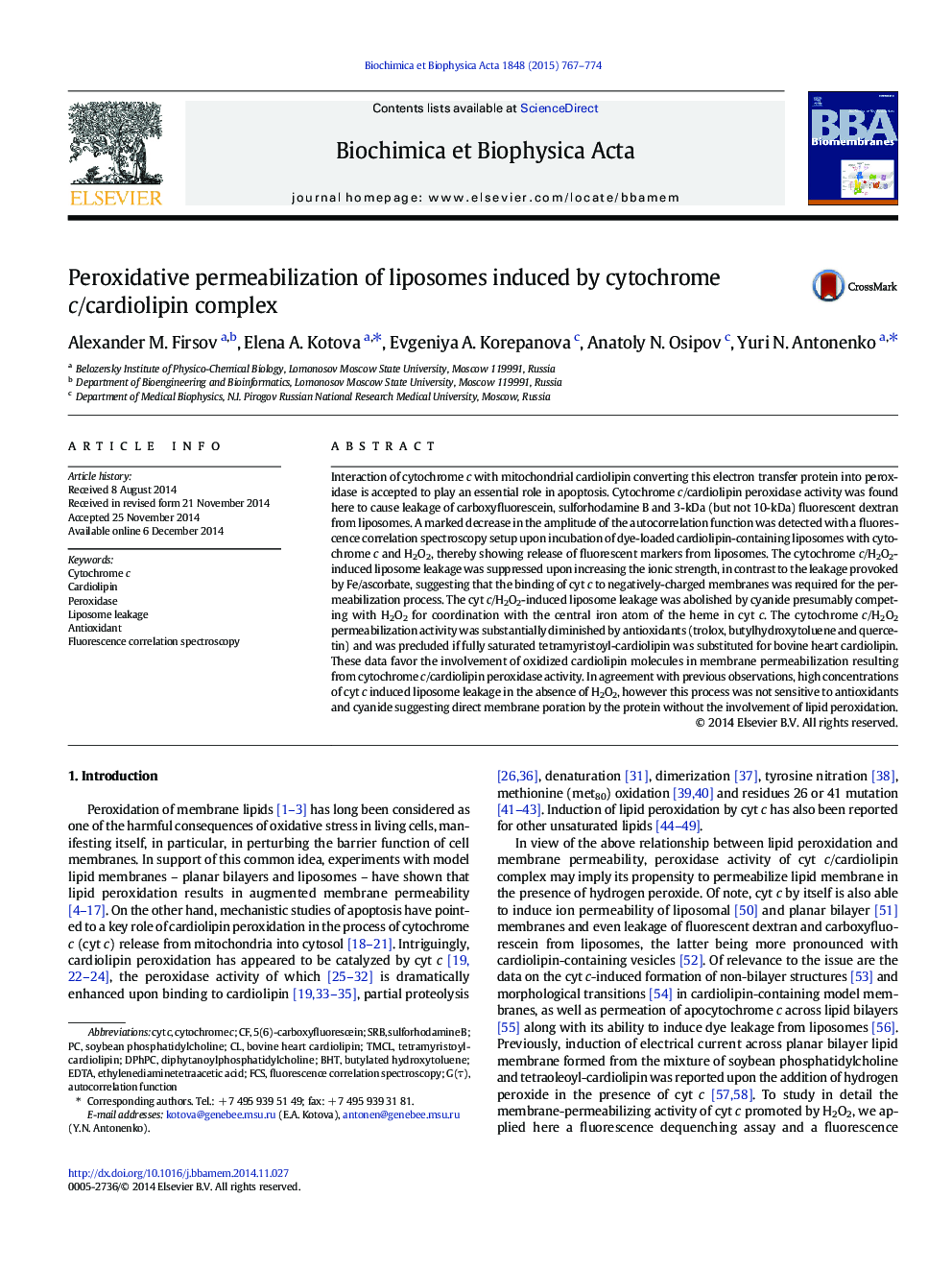| Article ID | Journal | Published Year | Pages | File Type |
|---|---|---|---|---|
| 1944030 | Biochimica et Biophysica Acta (BBA) - Biomembranes | 2015 | 8 Pages |
•Fluorescence dequenching assay and FCS revealed cyt c/H2O2-induced liposome leakage.•Only unsaturated cardiolipin-containing phospholipid membranes displayed the leakage.•This ionic strength-dependent dye leakage was inhibited by free radical scavengers.•The leakage of 10-kDa dextran was markedly suppressed compared to sulforhodamine B.
Interaction of cytochrome c with mitochondrial cardiolipin converting this electron transfer protein into peroxidase is accepted to play an essential role in apoptosis. Cytochrome c/cardiolipin peroxidase activity was found here to cause leakage of carboxyfluorescein, sulforhodamine B and 3-kDa (but not 10-kDa) fluorescent dextran from liposomes. A marked decrease in the amplitude of the autocorrelation function was detected with a fluorescence correlation spectroscopy setup upon incubation of dye-loaded cardiolipin-containing liposomes with cytochrome c and H2O2, thereby showing release of fluorescent markers from liposomes. The cytochrome c/H2O2-induced liposome leakage was suppressed upon increasing the ionic strength, in contrast to the leakage provoked by Fe/ascorbate, suggesting that the binding of cyt c to negatively-charged membranes was required for the permeabilization process. The cyt c/H2O2-induced liposome leakage was abolished by cyanide presumably competing with H2O2 for coordination with the central iron atom of the heme in cyt c. The cytochrome c/H2O2 permeabilization activity was substantially diminished by antioxidants (trolox, butylhydroxytoluene and quercetin) and was precluded if fully saturated tetramyristoyl-cardiolipin was substituted for bovine heart cardiolipin. These data favor the involvement of oxidized cardiolipin molecules in membrane permeabilization resulting from cytochrome c/cardiolipin peroxidase activity. In agreement with previous observations, high concentrations of cyt c induced liposome leakage in the absence of H2O2, however this process was not sensitive to antioxidants and cyanide suggesting direct membrane poration by the protein without the involvement of lipid peroxidation.
Graphical abstractFigure optionsDownload full-size imageDownload high-quality image (251 K)Download as PowerPoint slide
